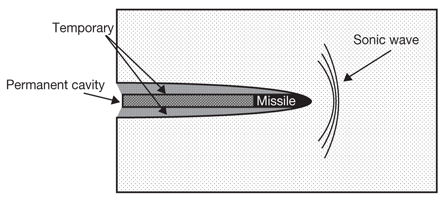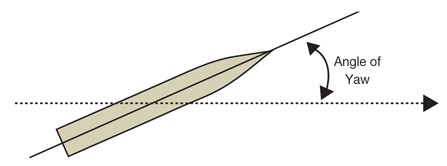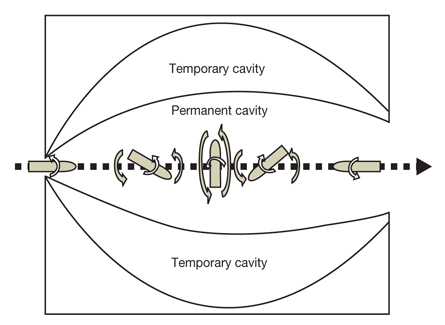J Korean Med Assoc.
2012 May;55(5):463-472. 10.5124/jkma.2012.55.5.463.
Mechanisms of injury and treatment principles of gunshot wounds
- Affiliations
-
- 1Department of Thoracic Surgery, Armed Forces Capital Hospital, Medical Corps, Republic of Korea Army, Seongnam, Korea. gustie@hotmail.com
- KMID: 2064803
- DOI: http://doi.org/10.5124/jkma.2012.55.5.463
Abstract
- Gunshot wounds have been an important source of injury for centuries and continue to occur. The military medical communities have developed standard procedural sequences and principles that may assist and serve as references to the care of civilian gunshot wound patients. In addition to the basic understanding of the wounding patterns and potential extent of the damage caused by the ballistic characteristics of the missile, three principles need to be emphasized in the course of the treatment: timely debridement, delivery of antibiotics, and delayed closure of the wound. Despite recent innovations and improvements in medicine, the three principles still stand, and may assist even surgeons with minimal experience in treating gunshot wounds to achieve reliable results. The situation and environment of civilian medical facilities differ from those of the military in war time, and less invasive and more conservative methods may be attempted in accordance with available resources.
Keyword
MeSH Terms
Figure
Reference
-
1. Feliciano DV, Wall MJ. Moore EE, Mattox KL, Feliciano DV, editors. Patterns of injury. Trauma. 1991. 2nd ed. Norwalk: Appleton & Lange;83–88.
Article2. Lee DY. Gunshot Wounds: Management and Measures in Conventional Combat Injuries. 1992. Seoul: Seran Publisher.
Article3. Bellamy RF, Zajtchuk R. Conventional warfare: ballistic, blast, and burn injuries. Part 1. Warfare, weaponry, and the casualty. 1991. Washington, DC: Office of the Surgeon General at TMM Publications.
Article4. US Department of Defense. Emergency war surgery. 2004. 3rd ed. [Washington, DC]: US Department of Defense.
Article5. Ordog GJ, Wasserberger J, Balasubramanium S. Wound ballistics: theory and practice. Ann Emerg Med. 1984. 13:1113–1122.
Article6. Barach E, Tomlanovich M, Nowak R. Ballistics: a pathophysiologic examination of the wounding mechanisms of firearms. Part I. J Trauma. 1986. 26:225–235.
Article7. Wound ballistics. West J Med. 1977. 127:49–54.
Article8. Fackler ML. Wound ballistics, round 3. Ann Emerg Med. 1985. 14:936–938.9. Ballistics: a pathologic examination of the wounding mechanisms of firearms. J Trauma. 1986. 26:1157–1160.10. Fackler ML, Malinowski JA. The wound profile: a visual method for quantifying gunshot wound components. J Trauma. 1985. 25:522–529.
Article11. Monroe CW. Debridement: when and how much? Bulletin US Army Med Dep. 1944. (77):37–41.
Article12. Roettinger W, Edgerton MT, Kurtz LD, Prusak M, Edlich RF. Role of inoculation site as a determinant of infection in soft tissue wounds. Am J Surg. 1973. 126:354–358.13. Haury BB, Rodeheaver GT, Pettry D, Edgerton MT, Edlich RF. Inhibition of nonspecific defenses by soil infection potentiating factors. Surg Gynecol Obstet. 1977. 144:19–24.14. Krizek TJ, Davis JH. The role of the red cell in subcutaneous infection. J Trauma. 1965. 5:85–95.15. Angel MF, Narayanan K, Swartz WM, Ramasastry SS, Basford RE, Kuhns DB, Futrell JW. The etiologic role of free radicals in hematoma-induced flap necrosis. Plast Reconstr Surg. 1986. 77:795–803.16. Cardany CR, Rodeheaver G, Thacker J, Edgerton MT, Edlich RF. The crush injury: a high risk wound. JACEP. 1976. 5:965–970.
Article17. Mendelson JA. The relationship between mechanisms of wounding and principles of treatment of missile wounds. J Trauma. 1991. 31:1181–1202.
Article18. US Surgeon-General's Office. The medical department of the U.S. army in the World War. Vol. XI. Surgery. 1927. Washington, DC: Government Printing Office.
Article19. Rodeheaver GT, Smith SL, Thacker JG, Edgerton MT, Edlich RF. Mechanical cleansing of contaminated wounds with a surfactant. Am J Surg. 1975. 129:241–245.
Article20. Burke JF. The effective period of preventive antibiotic action in experimental incisions and dermal lesions. Surgery. 1961. 50:161–168.21. Dahlgren B, Almskog B, Berlin R, Nordstrom G, Rybeck B, Schantz B, Seeman T. Local effects of antibacterial therapy (benzyl-penicillin) on missile wound infection rate and tissue devitalization when debridement is delayed for twelve hours. Acta Chir Scand Suppl. 1982. 508:271–279.22. Mendelson JA, Lindsey D. Sulfamylon (mafenide) and penicillin as expedient treatment of experimental massive open wounds with C. perfringens infection. J Trauma. 1962. 2:239–261.23. Noyes HE, Chi NH, Linh LT, Mo DH, Punyashthiti K, Pugh C Jr. Delayed topical antimicrobials as adjuncts to systemic antibiotic therapy of war wounds: bacteriologic studies. Mil Med. 1967. 132:461–468.24. Fackler ML, Breteau JP, Courbil LJ, Taxit R, Glas J, Fievet JP. Open wound drainage versus wound excision in treating the modern assault rifle wound. Surgery. 1989. 105:576–584.25. Linden MA, Manton WI, Stewart RM, Thal ER, Feit H. Lead poisoning from retained bullets. Pathogenesis, diagnosis, and management. Ann Surg. 1982. 195:305–313.26. Nessen SC, Lounsbury DE, Hetz SP. US Department of the Army, Office of the Surgeon General. Walter Reed Army Medical Center. War surgery in Afghanistan and Iraq: a series of cases, 2003-2007. 2008. Falls Church: Office of the Surgeon General, US Army.27. Schwab CW. Violence: America's uncivil war-presidential address, Sixth Scientific Assembly of the Eastern Association for the Surgery of Trauma. J Trauma. 1993. 35:657–665.
- Full Text Links
- Actions
-
Cited
- CITED
-
- Close
- Share
- Similar articles
-
- Fracture of the Humeral Shaft Secondary to High-Velocity Gunshot (Machine Gun) Injury: A Case Report
- Paraplegia Following Spinal Cord Contusion from an Indirect Gunshot Injury
- A Case Report of Ureteral Injury by Gunshot Wound
- A Case of Renocolic Fistula and Intrarenal Aneurysm by Gunshot Wound
- Experience and successful treatment of craniocerebral gunshot injury at a regional trauma center in Korea: a case report and literature review







